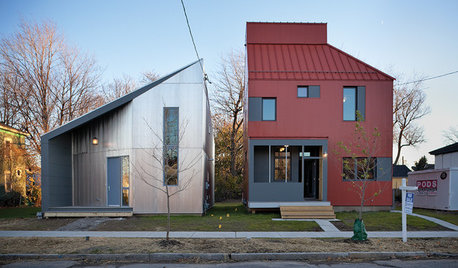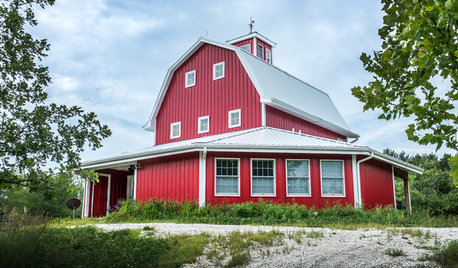Need help tracking down high energy use
sjmaye
13 years ago
Related Stories

DECLUTTERINGDownsizing Help: How to Get Rid of Your Extra Stuff
Sell, consign, donate? We walk you through the options so you can sail through scaling down
Full Story
GREEN BUILDINGHouzz Tour: High-End Luxury, Highest Ecofriendly Rating in California
Solar panels and energy savers let this posh LEED Platinum home produce as much energy as it consumes
Full Story
LIFEDecluttering — How to Get the Help You Need
Don't worry if you can't shed stuff and organize alone; help is at your disposal
Full Story
WINDOW TREATMENTS7 Window Treatments That Can Lower Your Energy Bills
Beautify your windows, keep your home cool and reduce energy use all at once with the right covering
Full Story
HOME OFFICESOnline Tools Help Paperless Plunge
Pay bills, catch up on reading and keep track of schedules and dates with these terrific online tools
Full Story
GREEN BUILDINGHouzz Tour: See a Maine House With a $240 Annual Energy Bill
Airtight and powered by the sun, this energy-efficient home in a cold-winter climate is an architectural feat
Full Story
ARCHITECTUREEnergy-Saving Ideas From 3 Affordable Green-Built Houses
Get lessons in budget-friendly green building from design competition winners in New York state
Full Story
BARN HOMESHouzz Tour: An Energy-Efficient Barn Graces the Nebraska Landscape
Passive-house technologies and a rain-harvesting and greywater system conserve natural resources in this weekend country home
Full Story
DECLUTTERINGDownsizing Help: How to Edit Your Belongings
Learn what to take and what to toss if you're moving to a smaller home
Full Story
REMODELING GUIDESWisdom to Help Your Relationship Survive a Remodel
Spend less time patching up partnerships and more time spackling and sanding with this insight from a Houzz remodeling survey
Full StoryMore Discussions










texasredhead
sjmayeOriginal Author
Related Professionals
Alhambra General Contractors · Erlanger General Contractors · Melville General Contractors · West Babylon General Contractors · Joppatowne General Contractors · Bell Gardens Solar Energy Systems · Chino Hills Solar Energy Systems · Forest Park Solar Energy Systems · Hemet Solar Energy Systems · Little Ferry Solar Energy Systems · Pinellas Park Solar Energy Systems · Voorhees Solar Energy Systems · Baltimore Home Automation & Home Media · Fort Collins Home Automation & Home Media · Waterford Home Automation & Home Mediakurto
sjmayeOriginal Author
Billl
jaysgarden
texasredhead
jaysgarden
kudzu9
sjmayeOriginal Author
texasredhead
kudzu9
brickeyee
countryboymo
sjmayeOriginal Author